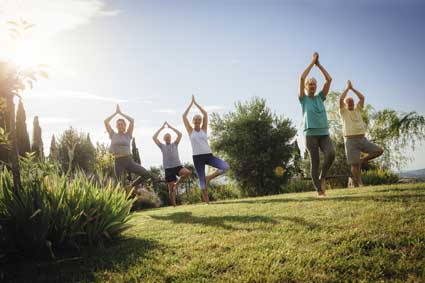Survival Strategies
A fire can happen when you least expect it, therefore, knowing what to do before, during, and after a fire, ahead of time and is invaluable information. This article will show you how fire affects, not only humans and homes, but also property, plants, and animals. Wildland fires burn millions of acres per year, which destroy plants, trees, animals, property, buildings, and homes. However, wildland fires affect forestland in various lesser-known manners as well, in which we will also discuss in this article.
Survivable Spaces
A. Plants and Animals
Wildland fires wreak havoc on human lives and forces them from their homes. When a large wildfire ignites and spreads, it starts by affecting the plants, trees, and animals in the area. The grasses, dry leaves, and branches begin to burn, forcing insects and small animals to evacuate, some of them die, and some of them thrive. The heat alone can kill organisms buried deep in the ground, such as fungi. Temperatures have measured as high as 1,292 degrees Fahrenheit underneath a burning log, up to 212 degrees Fahrenheit two inches below the ground.
In order to survive a wildfire, most plants and animals have adaptive abilities, which allow them to regenerate and reproduce. We can define an adaptive ability as a behavior, which has some physical feature or other characteristics that helps all living things to survive and make the most of its specific habitat.
Plants of course, have a bit of a disadvantage compared to animals, as they have nowhere to go, during a wildfire. Plants have no way to creep, crawl, run, or fly out of the wildfire's path, so plants adapt other methods in order to survive.
Every type of plant must have adaptations to ensure its survival, foremost; the plant must be able to insulate itself from the heat of the flames during a wildfire. The thickness of the bark is the most important factor in determining the fire resistance of the tree itself. For example, a longleaf pine tree will have one of the thickest barks, which acts as insulation from the heat of the wildfire. On the other hand, shrubs and small woody plants tend to have thinner bark, in which they use the soil as an insulator to protect themselves. Certain plants can resist death by producing new growth from underground roots or bulbs.
Other plants will protect their buds with the use of an adaptation in order to survive the wildfire. For example, the longleaf pine protects its buds by a thick cluster of needles, which surround the bud. Some popular trees protect their buds by localizing them within the main roots and stem of the tree, which helps to protect it from the heat of a wildfire.
Most animals do not wait until the fire gets to them before trying to escape. Smoke, heat, and noises that are associated with fires can alert the animals that danger is coming and to get out of the wildfire's path. Large mammals will run away, birds will fly away, and amphibians and other small animals will take cover under rocks, hide out in logs, or burrow into the ground to escape the fire. Some animals will even take refuge in lakes and streams.
Young and smaller animals are more at risk during a wildfire, as they cannot run fast enough or find adequate shelter. Not all escape strategies that animals use always work correctly. For example, a koala's instinct is to climb a tree, leaving it trapped. However, the animals that do survive wildfires normally have a prolific reproduction rate, such as rodents and rabbits.
Although a wildfire is not a good thing when it happens in your backyard, it can be a good thing for animals that live in the forest or a prairie. Forests and prairies grow naturally and the composition of them changes over time. For instance, a year-old forest will have different plants and animals than a forest that is forty years old. Therefore, a wildfire can act as a reset button, allowing an old forest to be born again for the species that require a reset.
In fact, many species of plants require fire as part of their life history. Some types of fungi, such as morel mushrooms use the heat from the flames to stimulate them to release their spores. There are certain plants, which will only seed after a wildfire, and without fire, they cannot reproduce. This also affects anything, insect or animal, that depend upon the plant. For instance, long leaf pines have cones that hold the seeds in by a resin that is sensitive to high temperatures. The long leaf pine's cones will not open until they reach the critical temperature. Then, the cones open up allowing their seeds to fall into the ash and take root without much competition.
Sometimes, wildfires produce more biodiversity than what was there in the first place. The effects of a wildfire do not end when the flames die down. What happens depends on the severity of the wildfire, the landscape, and the species involved. However, the wildfire starts a succession of changes as microbes, fungi, plants, and animals recolonize the burned area. Moreover, as plants and trees age in the burned areas, sunlight and other features also change including the composition of the area, which include the animals living in the area.
Even the most severely burned areas are hot spots for both plants and animals. During and right after a wildfire is out; the area becomes a hunting ground for predators. For example, many times predators see the fleeing animals as an opportunity for an easy meal. Raccoons, bears, and raptors have seen predators hunting the animals trying to escape the wildfire. Rodents and other small creatures will burrow into the ground, take cover in a log, or hide under rocks. When the wildfire cools, they emerge and do not have many places to hide making them an easy target for predators.
Many times right after a wildfire, people assume that everything is dead, however; this is far from the case. The burned area is changed and it becomes an entirely new habitat for both plants and animals. Plants and wildlife have a long-standing relationship with fire, as it is a natural part of their habitats. This also means new opportunities for animals and plants alike. For example, woodpeckers will come into a burned area and feed on bark beetles in the dead and dying trees.
Wildfires also alter the manner in which streams and other water bodies change course. Wildfires can alter the water flow, volume, turbidity, chemistry, path, and structure. The water and land have a very close connection. There are short-term die-offs among aquatic creatures, which affect animals on the land. For instance, wildfires close to streams make the water warm enough to kill fish, which birds and other mammals rely upon.
Wildfires can increase the volume of water, causing the water to run off a slope or it goes directly through the soil. In this situation, the plants are no longer soaking water up, causing the runoff. As a result, debris will flow downwards and can alter the course of the water flow. After a wildfire, harmful sediment can enter a stream during runoff; however, some of the sediment washed into the stream contains nutrients for insects, and becomes food for plants and fish.
The natural progression of wildfires over the past century in the U.S. has been in a state of suppression. Fire prevention and Smokey the Bear have worked a little too well. Firefighters put out wildfires quickly that start, before they can spread, which allows fuel loads to build, making them harder to put out years down the road. This has led to the decline of the types of trees that will grow after a major wildfire. This ends up causing the flora and animals to change along with the decline of the types of trees. It also causes a decline in the species of animals that require a young, post-wildfire habitat. For instance, the red cockaded woodpecker is on the endangered species list and likes to nest in longleaf pine trees. Longleaf pines are dependent on naturally occurring wildfires to release their seeds, so when a wildfire occurs with a very high fuel load, it can become destructive to the red cockaded woodpecker's habitat.
B. Humans and Structures
House and structure fires with humans involved can become a deadly situation in a very short period. House and other structure fires can become life-changing events, as the fire takes hold of the flammable materials, it can turn into a mindless killer. Therefore, it is a great idea to practice good fire prevention techniques.
The first step in creating a safer house or any other type of structure is to detect possible fire hazards. You should inspect your home or other structures for overloaded electrical outlets and power strips on a periodic basis. Clean dryer vents every time you use it in order to prevent the buildup of flammable fibers. Make sure there is a functional smoke alarm in every section of the house or other structure, and replace the batteries on a regular basis. If any gas appliance begins to show faults, replace them. Keep flammable materials such as paper, kitchen towels, or liquids away from the stove. You also want to make sure that children do not have access to any kind of fire starter, such as matches and lighters.
If the fire prevention techniques fail, you may have an opportunity to put the fire out before it gets out of hand, with the help of a fire extinguisher. However, it is not a foolproof device, but it does pay off to know how to operate a fire extinguisher. Make sure that everyone else is out of the house or other structure and call 911, before using the extinguisher. There are different extinguishers for every class of fire. The following will help you to pick the right type of fire extinguisher:
-
Class A: This type of fire extinguisher will put out fires that involve wood, cloth, paper, plastics, and rubber.
-
Class B: This type of fire extinguisher will put out fires that involve grease, oils, gas, and oil-based products.
-
Class C: This type of fire extinguisher will put out fires that involve electrical equipment.
-
Class K: This type of fire extinguisher will put out fires that involve animal or vegetable oil, as well as any other kitchen combustibles.
You also want to check and make sure that your fire extinguisher is up to date on a periodic basis, by making sure the pressure needle is in the green.
You should always remember that time is the biggest enemy and every second counts in the event of a fire. In less than thirty seconds, a small fire can become a raging inferno, and it only takes a few minutes for the entire house or other structure to start filling with thick black smoke.
This is the time, when you need to have an escape plan in place, for home, work, or any other type of structure. This can be the most important survival plan for you and your family. Practice escaping from every room in your home, low crawling to get out, stop-drop-and-roll, as well as escaping in the dark. Be sure to practice your escape plan on a monthly basis. It is also a good idea to practice getting out of the house with your eyes closed, as smoke can render your visibility useless.
It would be prudent, if possible, that you have two ways to get out of each room. If something blocks your primary way out, you need to have another way out. You might be able to use a window if you are on the bottom floor, where you can take the screens off to get out. If you live in a multi-story house or building, you might want to consider buying an approved escape ladder.
As soon as a fire starts, you need to get you and your family out as quickly as possible. Do not waste time trying to save any personal property, as the smoke contains toxic gases, which can disorient or even render you unconscious. Take the safest route out of the house or other structure. If it is smoky, crawl under the smoke and cover your mouth.
When you approach a door, make sure to use the back of your hand to feel the top of the door, doorknob, and the cracks to make sure there is no fire on the other side. If it feels hot, then use your second escape route to get out. If the door feels cool, be sure to open it slowly and if any heat or smoke comes in, close the door firmly and use your second escape route.
Whether you are in your home or at some other structure, you need to designate a meeting place for your family, coworkers, etc. This way you can make sure that everyone gets out of the building safely. Then, designate one person to go to a neighbor's home to call the fire department. If you find that someone is missing, make sure to tell the firefighters, as they have the equipment and training to rescue someone safely. In addition, be sure to teach your children not to hide from firefighters.
Once you get out of the home or other structure, do not reenter the building. Make sure to have your family agree not to go back into a burning building for any reason, at the risk of death. Firefighters have the equipment and training to put the fire out safely, and if you go back in, you are hindering the attempts of the firefighters.
You should also take special precautions when security bars are present. They work great at keeping people out, but it can also trap you and your family inside a house during a fire. Make sure to have quick release devices on the windows and doors, to allow you to open them quickly in an emergency. You also want to make sure to train everyone on how to operate and open any barred doors and windows.
C. Property
Communities, landowners, and homeowners have the responsibility to protect themselves, their property, and their local values from the threat of a wildfire. There are steps that we can take to protect property and help to lessen the spread of wildfires. If you live near a fire-prone ecosystem, you need to understand the nature of them. For instance, if you live in a coastal area where "bays" are present, there is a very high fire risk due to the composition of the "bay". In this case, a "bay" is an area with a high fuel load and naturally occurring peat moss underneath the ground, which increases the likelihood of spreading by way of an underground wildfire. This is something important to keep in mind when buying a house or building a new home.
You can help to prevent a wildfire taking over your home by creating defensible space around your home. We can define defensible space as the area around a house or other structure, which you can modify to reduce the fire hazard. For example, if you live near a "bay", you do not want to plant wax myrtle trees in your yard, as the oils splatter and it causes the fire to spread. There are many other ways in which to create defensible space around your home, including treating wood materials, using a metal roof, keeping the yard clean, and keeping flammable materials away from your home.
Although, you may not accomplish all the items listed, each of them will help to reduce wildfire hazards around your home or other building. Be sure to start with the least expensive and easiest tasks, and start working closest to your house and move outward.














